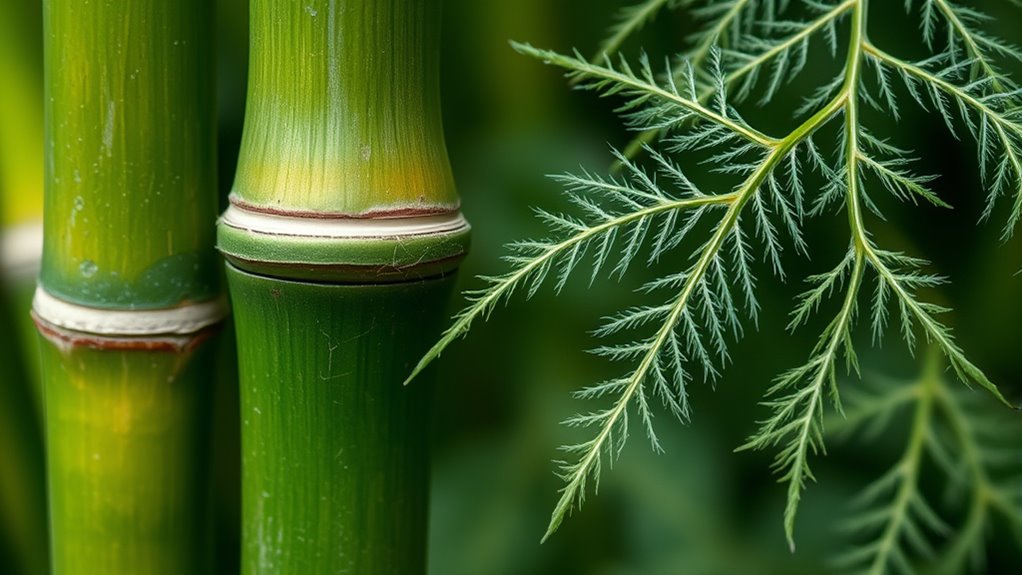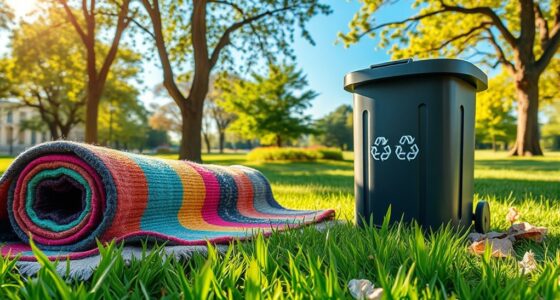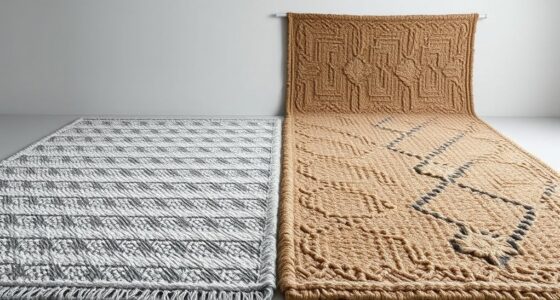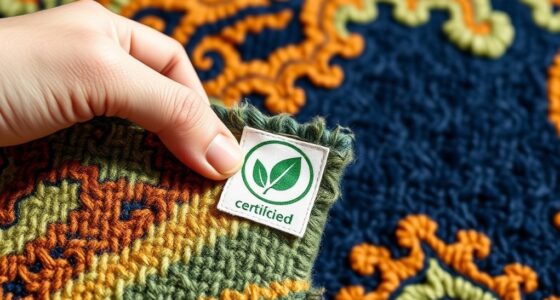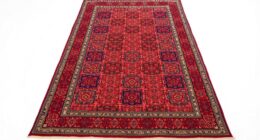Evaluating plant-based fiber alternatives like bamboo and nettle involves considering their environmental impact, cultivation methods, and processing techniques. Bamboo grows quickly but may cause habitat loss if not managed sustainably, while nettle is easier to cultivate with minimal water. Processing methods influence fiber strength, durability, and eco-friendliness. Market potential is growing, but supply chain challenges remain. To explore how these factors affect their adoption and future, continue exploring the details below.
Key Takeaways
- Bamboo offers strong, durable fibers suitable for textiles and composites, but sustainability depends on responsible harvesting practices.
- Nettle fibers are eco-friendly, require minimal water, and grow easily without irrigation, making them a sustainable alternative.
- Processing methods impact fiber quality, influencing durability, flexibility, and application suitability of bamboo and nettle fibers.
- Market demand for eco-friendly materials is increasing, presenting growth opportunities for plant-based fibers like bamboo and nettle.
- Supply chain challenges such as inconsistent raw material quality and seasonal harvests affect scalability and reliable availability.
Environmental Impact and Sustainability of Bamboo and Nettle Fibers
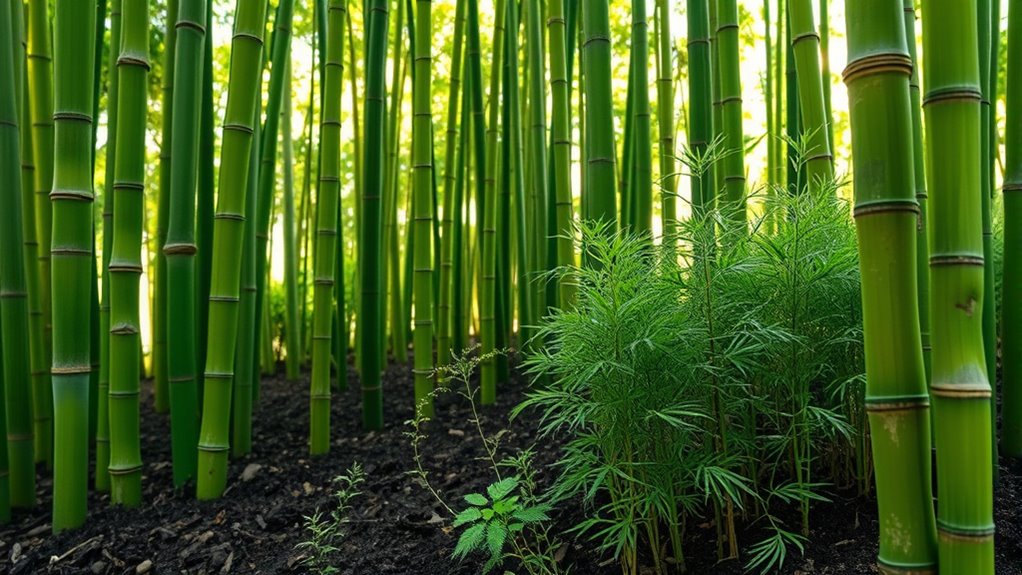
Bamboo and nettle fibers are often promoted as sustainable alternatives to traditional textiles, but their environmental impacts vary considerably. You should consider water usage, as bamboo generally requires less water than cotton, making it more eco-friendly in that aspect. However, some bamboo farming practices can involve significant water consumption, especially in monoculture plantations. Nettle, on the other hand, grows easily without irrigation, reducing water stress. Regarding biodiversity impact, bamboo can sometimes lead to habitat loss if monocultured, but it can also support local ecosystems if harvested sustainably. Nettle typically has a minimal impact on biodiversity because it naturally grows in diverse environments and doesn’t require extensive land management. Additionally, biodiversity considerations play a crucial role in evaluating the overall sustainability of these fibers. Overall, both fibers have potential, but their sustainability depends heavily on farming practices and land management.
Cultivation and Harvesting Practices for Optimal Fiber Quality
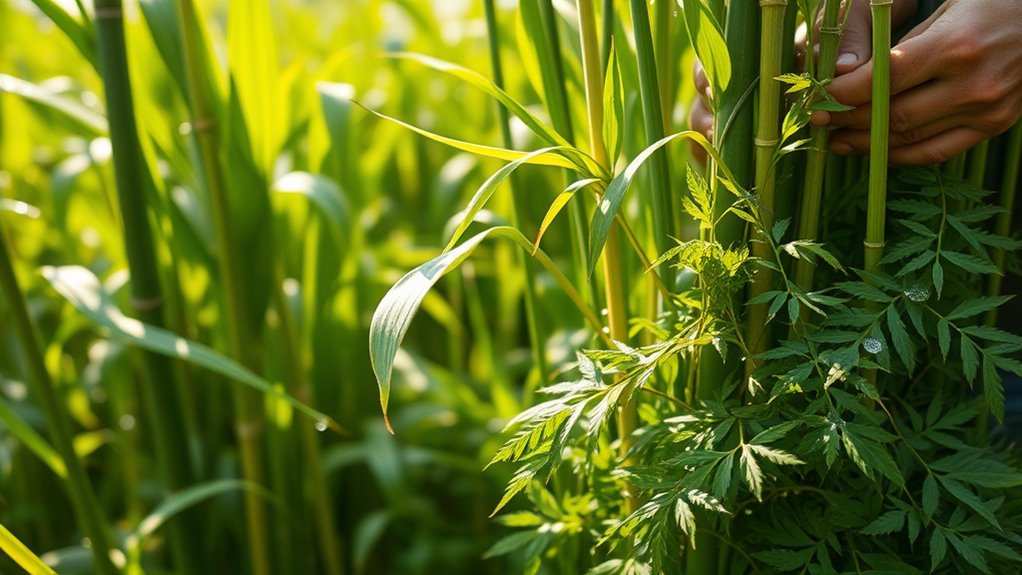
To achieve ideal fiber quality from bamboo and nettle, you need to focus on precise cultivation and harvesting practices. Proper harvesting techniques are vital; for bamboo, harvest when stalks reach peak maturity, usually after 3-5 years. For nettle, harvest young leaves before flowering for softer fibers. Incorporate crop rotation to maintain soil health and prevent pests, alternating fiber crops with legumes or grasses. Timing your harvest correctly ensures fibers are strong and flexible, not woody or brittle. In addition, use selective harvesting to avoid overharvesting, allowing plants to regenerate. Proper pruning and soil management further boost fiber quality. Monitoring plant growth stages closely helps optimize harvest timing. Consistent attention to these practices leads to fibers that are both high-quality and sustainable.
Processing Techniques and Their Effect on Fiber Properties
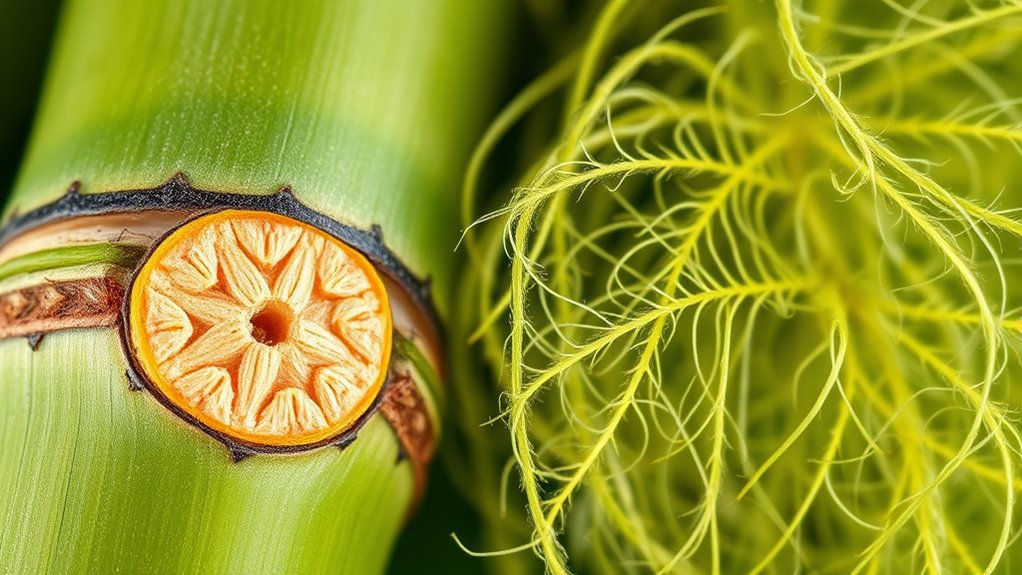
Processing techniques play a pivotal role in determining the final fiber properties, influencing strength, flexibility, and durability. The way you treat fibers through specific processing methods impacts their structural integrity and performance. Fiber treatment involves chemical, mechanical, or enzymatic processes that modify fiber surface properties, remove impurities, or enhance bonding potential. For example, retting and decortication are critical processing methods that affect fiber cleanliness and fiber-fiber adhesion. Proper processing guarantees fibers retain desirable characteristics, such as elasticity and tensile strength, while minimizing defects. Additionally, understanding the scientific skepticism surrounding these methods helps refine processing standards and improve fiber quality. The choice of fiber treatment and processing techniques directly shapes the fiber’s suitability for various applications, whether in textiles, composites, or other materials. Thus, optimizing these steps is crucial for unlocking the full potential of bamboo and nettle fibers.
Mechanical Performance and Durability of the Fibers
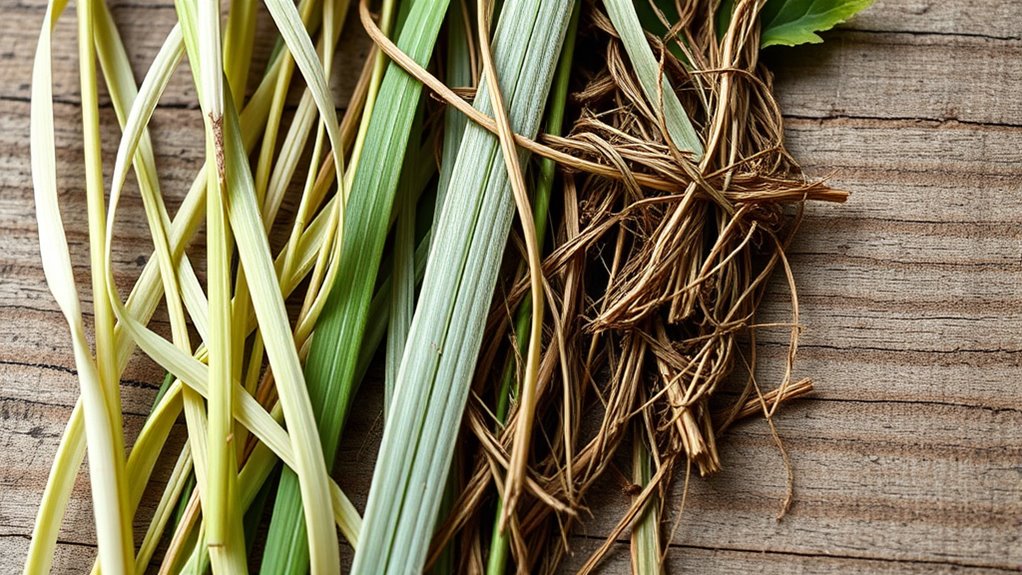
The mechanical performance and durability of plant-based fibers determine their ability to withstand stress and maintain functionality over time. You’ll want fibers with high fiber tensile strength to resist breaking under load, ensuring longevity. Wear resistance is equally important, especially in applications involving friction or repeated use. Bamboo fibers typically offer good tensile strength and wear resistance, making them suitable for durable products. Nettle fibers, while strong, can be more susceptible to wear if not properly treated. To optimize performance, look for fibers that balance tensile strength with flexibility, reducing breakage risks. Proper processing can enhance these properties, extending the fiber’s lifespan and making them more reliable for various uses. Understanding fiber durability factors helps you select the best fiber for your needs.
Economic Considerations and Market Potential

Evaluating the economic considerations and market potential of plant-based fibers reveals promising opportunities for sustainable industries. You’ll find that rising market demand for eco-friendly materials boosts interest in fibers like bamboo and nettle. These fibers offer competitive pricing strategies due to their rapid growth and low input costs, enabling producers to meet consumer expectations while maintaining profitability. As demand increases, scaling production becomes more viable, attracting investments and expanding market reach. You should also consider regional factors affecting costs and pricing, which influence overall market competitiveness. With ongoing consumer shifts toward sustainability, plant-based fibers are positioned to grow as sustainable alternatives. By understanding these economic dynamics, you can better strategize product positioning and capitalize on emerging market trends. Thorough due diligence is essential to identify the most promising opportunities and mitigate potential risks in this evolving sector.
Challenges and Limitations in Adoption and Scaling
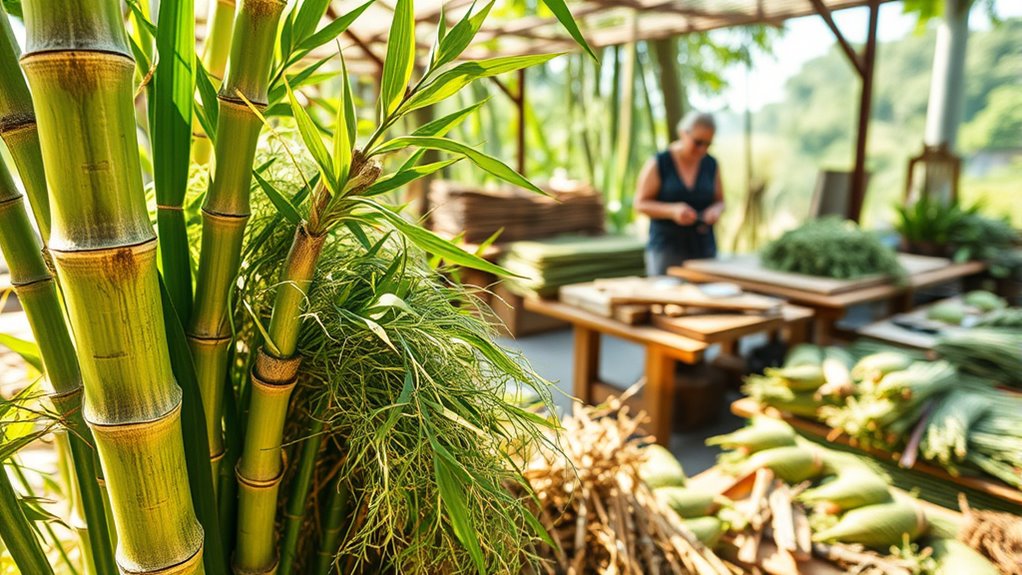
You’ll need to consider how environmental impact concerns might slow down adoption, as some plant fibers raise sustainability questions. Supply chain and scalability issues can also pose significant hurdles, making it difficult to meet growing demand. Addressing these challenges is essential for successfully expanding plant-based fiber options. Furthermore, understanding the relationships involved in sustainable development can help identify opportunities for more effective solutions.
Environmental Impact Concerns
Are plant-based fiber alternatives truly sustainable when scaled up? Not necessarily. Growing bamboo or nettle can raise biodegradability concerns if not managed properly, as some treatments may hinder natural decomposition. Chemical usage is another issue; processing these fibers often involves chemicals that can harm ecosystems and workers. You might also face challenges with water consumption, pesticide reliance, or soil health impacts. Scaling up without careful planning could lead to environmental setbacks rather than benefits. Additionally, the environmental impact of large-scale cultivation and processing can vary widely depending on practices employed, making it essential to develop and adopt sustainable methods.
- Excessive chemical treatments that reduce biodegradability
- High water and pesticide use in cultivation
- Soil degradation from intensive farming practices
- Potential pollution from manufacturing processes
Balancing environmental benefits with these challenges requires innovative solutions and sustainable practices to ensure plant-based fibers fulfill their eco-friendly promise.
Supply Chain and Scalability
Scaling up plant-based fiber production faces significant supply chain hurdles that can hinder widespread adoption. Supply chain logistics often involve complex coordination between farming, processing, and distribution, which can slow down scaling efforts. Limited infrastructure, especially in regions with high bamboo or nettle growth, adds to these challenges. Scalability hurdles include inconsistent raw material quality, seasonal harvesting cycles, and transportation issues that increase costs and delays. Additionally, establishing reliable supply chains requires substantial investment and long-term planning, which can deter new entrants. Without streamlined logistics and increased capacity, expanding production to meet rising demand remains difficult. Overcoming these barriers is essential for making plant-based fibers a viable, scalable alternative to traditional textiles.
Future Outlook and Innovations in Plant-Based Fibers
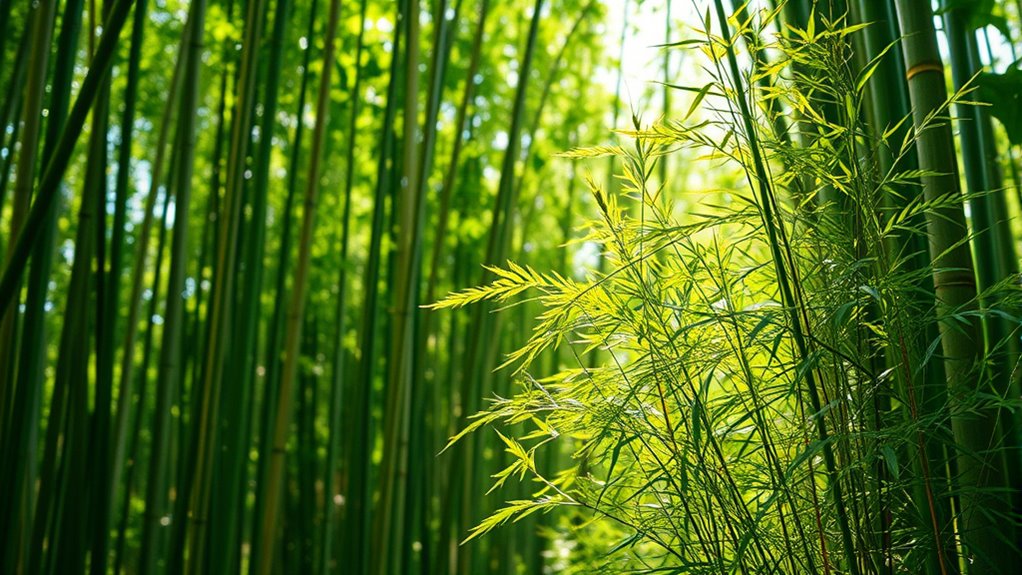
The future of plant-based fibers looks promising with ongoing advancements in sustainable materials and innovative fiber technologies. These developments could considerably improve environmental impact and expand applications across industries. Staying informed about these trends helps you understand how they might shape the next generation of eco-friendly solutions.
Sustainable Material Advancements
As research advances, innovative plant-based fiber technologies are poised to transform sustainable materials. You’ll see progress in fiber blending techniques, allowing different plant fibers to combine for improved strength and flexibility. Dyeing methods are also evolving, with eco-friendly options reducing water use and chemical waste. These innovations make plant fibers more versatile and appealing for various industries. For example, blending bamboo with nettle can enhance durability, while new dyeing methods retain color vibrancy without harming the environment. Additionally, researchers are exploring biodegradable coatings to extend fiber lifespan naturally. These advancements help you create products that are not only sustainable but also high-quality. Emerging processing techniques are enhancing the overall performance of plant-based fibers, making them more competitive and accessible, shaping a greener future for textiles and beyond.
Emerging Fiber Technologies
Emerging fiber technologies hold the potential to revolutionize plant-based materials, opening new possibilities for sustainability and performance. Advances in fiber blending enable the combination of fibers like bamboo and nettle with other sustainable materials, enhancing strength, texture, and functionality. These innovations can lead to lighter, more durable textiles, reducing reliance on synthetic fibers. Additionally, new dyeing techniques are emerging that minimize water use and eliminate harmful chemicals, making the process more eco-friendly. These methods allow for vibrant, long-lasting colors while maintaining biodegradability. As these technologies develop, you’ll find more versatile applications for plant-based fibers, from fashion to industrial uses. Furthermore, improvements in craft and textiles are facilitating the development of innovative, eco-conscious fiber treatments that extend the lifespan of sustainable materials. Overall, these innovations promise to increase the appeal and practicality of sustainable fibers, driving their adoption in future materials.
Frequently Asked Questions
How Do Bamboo and Nettle Fibers Compare in Antimicrobial Properties?
You might wonder how bamboo and nettle fibers compare in antimicrobial efficacy. Bamboo fibers are known for strong antimicrobial properties, making them durable and resistant to bacteria. Nettle fibers also offer antimicrobial benefits, but their efficacy varies depending on processing methods. Overall, bamboo tends to provide better antimicrobial efficacy and fiber durability, making it a popular choice for textiles, while nettle fibers are a promising sustainable alternative with notable antimicrobial qualities.
Are There Health Risks Associated With Processing or Wearing Plant-Based Fibers?
They say, “Better safe than sorry,” and that rings true with plant-based fibers. You might face health risks from chemical exposure during processing or allergic reactions when wearing them. Always check for certifications and natural treatments. While plant fibers are eco-friendly, improper processing can introduce irritants or chemicals, so staying informed helps protect your health and enjoy their benefits safely.
What Are the Best End-Use Applications for Bamboo Versus Nettle Fibers?
You should consider that bamboo fibers excel in textile durability, making them ideal for everyday clothing, towels, and bedding due to their strength and softness. Nettle fibers, on the other hand, have a lower environmental impact during production and are suitable for lightweight textiles, ropes, or eco-friendly fabrics. Both fibers offer sustainable options, but bamboo’s durability makes it better for long-lasting textiles, while nettle suits applications prioritizing eco-friendliness.
How Do Fiber Processing Costs Influence Market Competitiveness?
You should consider how fiber processing costs impact market competitiveness by focusing on cost efficiency and supply chain factors. Lower processing costs help you offer more competitive prices, attracting buyers and expanding your market share. A streamlined supply chain reduces delays and expenses, boosting your profitability. By optimizing these aspects, you enhance your ability to compete effectively, regardless of whether you’re working with bamboo or nettle fibers, ultimately strengthening your position in the industry.
What Policies Support Sustainable Development of Plant-Based Fiber Industries?
Promoting plant-based fiber industries requires policies that prioritize progress and partnership. You’ll find government incentives, like grants and tax breaks, encouraging eco-friendly growth. Trade agreements facilitate fair, free-flowing exchanges, fostering global collaboration. Such policies propel sustainable development, powering plant-based fiber progress. By supporting these strategies, you champion cleaner, greener industries and guarantee environmentally and economically beneficial benefits for future generations.
Conclusion
Think of bamboo and nettle like twin streams, each carving its path through the landscape of sustainable fibers. As you explore their potential, remember that your choices shape their flow—guiding innovations, overcoming hurdles, and nurturing growth. By embracing these natural rivers, you become part of their journey toward a greener future, where every fiber you select helps build a more resilient and vibrant world. Let your decision be the current that drives change forward.
